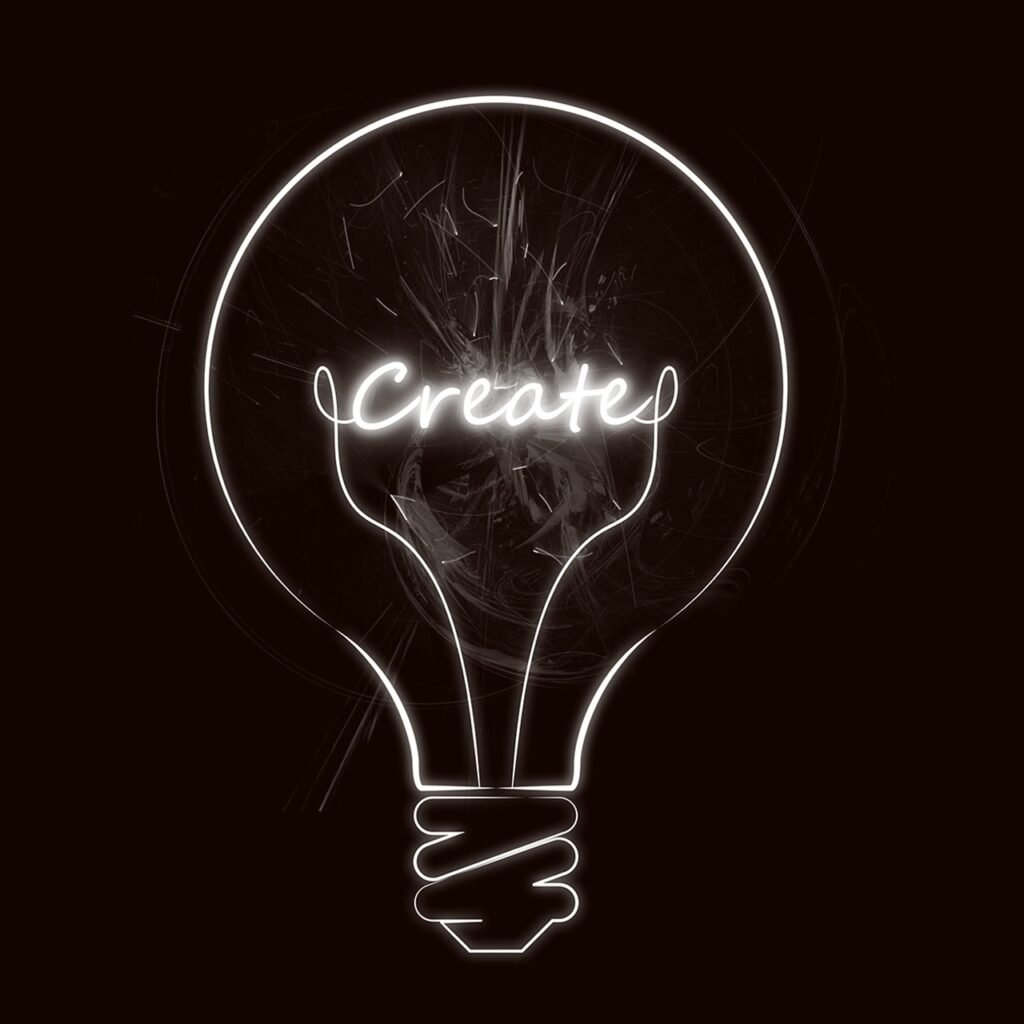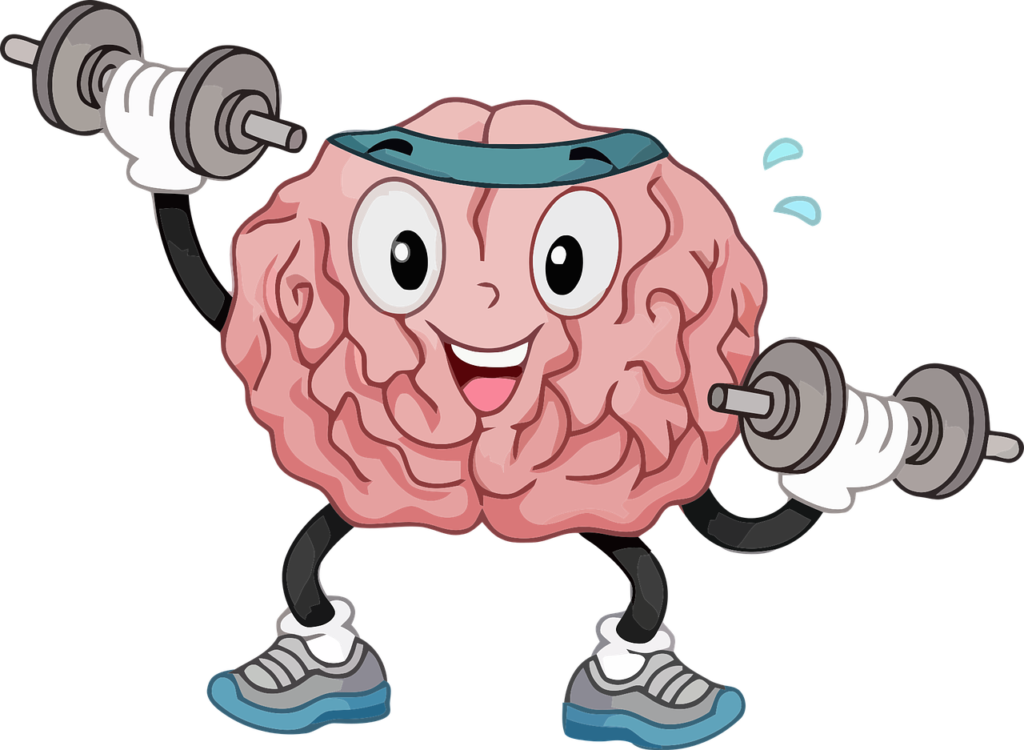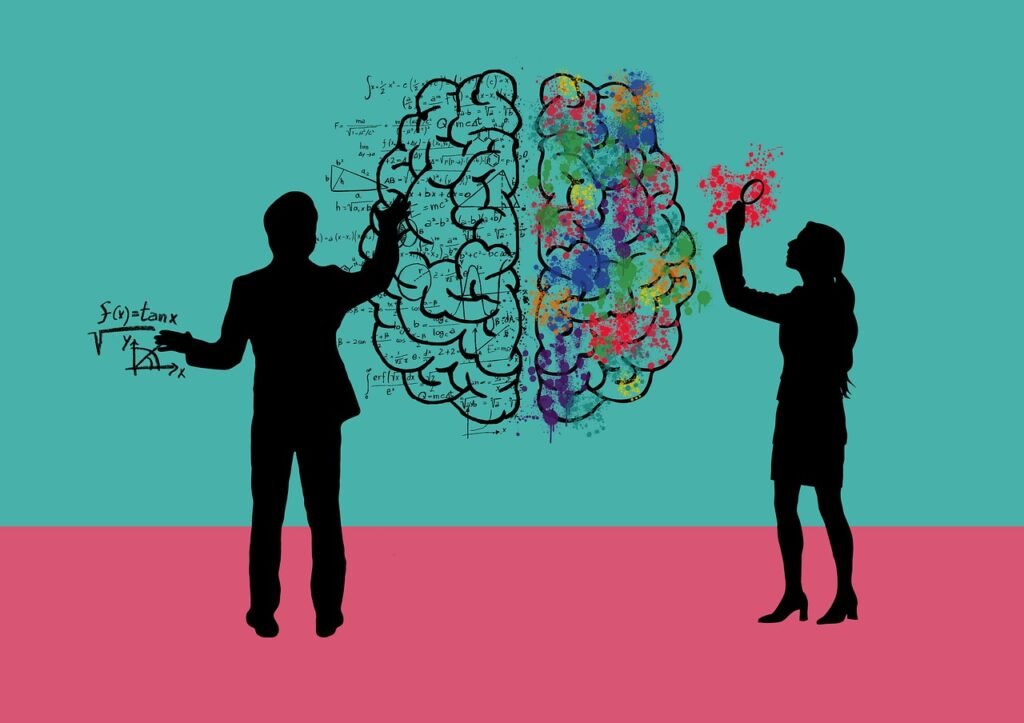
Introduction to Brain Training
In trying to keep up with the quick pace of today’s world, the capacity to learn rapidly and effectively is a highly coveted skill.
Brain training techniques are becoming increasingly popular as individuals seek to enhance their cognitive abilities and improve their adaptability to new information and challenges.
These techniques encompass a range of cognitive exercises designed to boost mental performance, making it easier to acquire and retain new skills.
One compelling aspect of brain training is its ability to harness the brain’s inherent neuroplasticity, the capacity to form and reorganize synaptic connections in response to learning and experience.
This adaptability is the foundation upon which various brain training methods build, offering a pathway to accelerated learning and skill development.
Visualization techniques, for instance, are powerful tools that use mental imagery to enhance memory and understanding.
When you visualize concepts or processes, you create vivid mental associations that make it easier to recall information later on.
This approach is particularly useful in academic settings, where students can visualize historical events or scientific processes to deepen their comprehension.
Memory games and exercises also play a crucial role in cognitive enhancement.
Engaging in activities like puzzles and brainteasers can sharpen focus, improve memory, and increase mental agility.
These exercises stimulate different parts of the brain, promoting better overall cognitive function.
Mindfulness and meditation practices are another effective way to boost cognitive performance.
Regular meditation can improve attention, memory, and emotional regulation, making it a valuable tool for learning.
Simple practices such as focused breathing or guided meditation sessions can help individuals tap into the cognitive benefits of mindfulness, reducing stress and enhancing concentration.
Interleaving practice, a technique involving the mixing of different subjects or skills during study sessions, has been shown to improve learning outcomes.
By continuously adapting and retrieving information from various contexts, the brain becomes better at differentiating and recalling different types of information.
Finally, physical exercise is integral to brain health.
Regular physical activity is linked to improved cognitive performance and mental well-being, thanks to increased blood flow to the brain and the promotion of neuroplasticity.
Activities like aerobic exercises and strength training can support brain function, further enhancing your ability to learn and retain new information.
Visualization Techniques

Visualization is a reframing technique that leverages mental imagery to improve your ability to retain information and understand complex concepts.
By picturing ideas or processes in your mind, you create mental associations that can make recall much more effective.
This method is especially useful in educational settings, where it can turn abstract theories into more concrete visual representations.
For example, students learning about the solar system might imagine themselves traveling from planet to planet, observing each one up close.
This vivid mental journey can make the facts about the planets more memorable.
Similarly, in the field of medicine, visualizing the anatomy of the human body can help medical students recall the location and function of various organs during examinations or surgical procedures.
Athletes also benefit from visualization by mentally rehearsing their movements and strategies before a competition.
A gymnast, for instance, might visualize every step of their routine, imagining how each muscle should move and what it will feel like to execute each element perfectly.
This mental rehearsal can build confidence and improve actual performance by creating a mental blueprint to follow.
Incorporating visualization into your daily routine doesn’t require a lot of time or effort.
It can be as simple as spending a few minutes each day imagining a successful outcome for a task or mentally practicing a skill you want to master.
Even professional musicians use visualization to mentally practice their pieces, imagining the feel of the instrument and the sound of each note.
This technique not only aids in performance but also reduces anxiety by familiarizing the mind with the task at hand.
Overall, visualization is a versatile and powerful tool for enhancing learning and performance across various fields.
Whether you’re a student, athlete, or professional, integrating mental imagery into your practice can provide substantial cognitive benefits, making your learning more efficient and effective.
Memory Games and Exercises

Engaging in memory games and exercises is an excellent way to enhance cognitive function.
These activities, such as puzzles and brainteasers, sharpen focus, improve memory, and boost mental agility.
Research has shown that individuals participating in brain training activities demonstrate significant improvements in various cognitive tasks, as measured by tools like the Cambridge Neuropsychological Test Automated Battery (CANTAB).
Moreover, these exercises often lead to a noticeable increase in performance indices, such as the Lumosity Performance Index (LPI).
By the end of their training period, participants saw significant improvement.
To make the most of memory training, consider incorporating a variety of games into your routine.
Sudoku, crossword puzzles, and digital brain-training apps are popular choices that provide a fun yet challenging way to engage your mind.
Games like these target different cognitive skills.
Sudoku, for example, enhances logical reasoning and pattern recognition, while crossword puzzles improve vocabulary and problem-solving abilities.
Digital apps often offer a range of activities designed to test memory, attention, and cognitive flexibility, providing a comprehensive workout for your brain.
Additionally, memory card games are effective for training short-term and working memory.
Matching pairs of cards can be particularly beneficial for younger individuals, helping to develop concentration and attention to detail.
For older adults, these games can serve as a way to keep the mind active and prevent cognitive decline.
For a more dynamic approach, try incorporating physical movement with mental challenges.
Activities like dance routines that require memorizing steps or sports drills that involve strategy and quick decision-making can be particularly effective.
These activities not only improve memory but also enhance coordination and multitasking skills.
By regularly engaging in these diverse and stimulating exercises, you can significantly boost your cognitive abilities, making it easier to learn and retain new information.
Mindfulness and Meditation

Mindfulness and meditation practices have garnered significant attention for their profound impact on cognitive function.
Regularly engaging in these practices can enhance various mental faculties, including attention, memory, and emotional regulation.
For those new to mindfulness, starting with simple exercises such as focused breathing or guided meditation sessions can be particularly beneficial.
These practices encourage a state of present-moment awareness, which is crucial for reducing stress and improving concentration.
The benefits of mindfulness extend beyond immediate cognitive enhancements.
When you regularly practice mindfulness, you train your brain to maintain focus for extended periods.
This increased attention span translates to more effective learning and information retention.
Studies have shown that individuals who practice mindfulness exhibit changes in brain regions associated with attention and self-regulation, suggesting long-term cognitive benefits.
One practical way to incorporate mindfulness into your daily routine is through mindful breathing exercises.
Spend a few minutes each day focusing on your breath, noticing the sensation of air entering and leaving your nostrils.
This simple act of concentration can help center your mind and improve your overall mental clarity.
Over time, these brief sessions can build a foundation for deeper and more sustained meditation practices.
Guided meditation apps are another excellent resource for those looking to explore mindfulness.
These apps often provide structured sessions that guide you through various techniques, from body scans to loving-kindness meditations.
By following along with these guided sessions, you can develop a consistent practice that supports your cognitive health.
Additionally, integrating mindfulness into everyday activities can be highly effective.
Whether it’s mindful eating, walking, or even brushing your teeth, bringing a sense of awareness and presence to routine tasks can enhance your overall mindfulness practice.
This approach not only improves concentration but also fosters a deeper connection with your daily experiences.
Incorporating mindfulness and meditation into your routine offers a holistic approach to cognitive enhancement.
By fostering present-moment awareness, reducing stress, and improving focus, these practices provide a valuable toolset for anyone looking to boost their learning capabilities and overall mental well-being.
Interleaving Practice

Interleaving practice is an effective method for enhancing learning by mixing different subjects or skills within a single study session.
This approach contrasts with the traditional method of focusing on one topic for a prolonged period.
By frequently switching between subjects, you challenge your brain to continuously adapt, thereby strengthening your ability to retain and apply new information.
For example, instead of spending an entire hour solely on algebra, a student might divide that time between algebra, history, and a foreign language.
This varied practice forces the brain to make connections between different types of knowledge, improving overall retention and understanding.
Research has demonstrated that interleaving practice can be particularly beneficial in fields that require problem-solving and critical thinking.
When you mix different types of problems or subjects, your brain works harder to distinguish between them and apply the correct strategies for each.
This leads to a deeper and more flexible understanding of the material.
For instance, athletes often use interleaving by incorporating different types of drills in a single training session.
A basketball player might practice shooting, dribbling, and defensive moves in rotation, enhancing their overall performance and adaptability on the court.
The effectiveness of interleaving is rooted in the concept of “desirable difficulties.”
These are learning tasks that are challenging but ultimately beneficial for long-term retention and skill acquisition.
Although interleaving practice may feel more difficult initially, this added challenge helps solidify learning by requiring more cognitive effort.
As a result, the information is more likely to be retained and easily recalled in the future.
To implement interleaving in your own studies or training, start by creating a schedule that alternates between different subjects or skills.
Ensure that the intervals are short enough to keep your brain engaged but long enough to make meaningful progress in each area.
For students, this might mean rotating subjects every 20 to 30 minutes.
For professionals, it could involve alternating between different tasks or projects throughout the day.
By incorporating interleaving practice into your routine, you can maximize your learning efficiency and enhance your ability to apply knowledge in real-world situations.
Physical Exercise and Brain Health

Engaging in regular physical exercise offers substantial benefits for brain health and cognitive function.
Physical activity increases blood flow to the brain, supplying it with essential nutrients and oxygen that support optimal brain function.
This enhanced circulation promotes the growth of new neurons and strengthens neuroplasticity, allowing the brain to adapt and reorganize itself more effectively.
One of the most impactful forms of physical exercise is aerobic activity, which includes activities such as running, swimming, and cycling.
These exercises are particularly effective at improving cardiovascular health, which directly influences brain function by ensuring a steady supply of oxygen-rich blood.
Studies have shown that individuals who engage in regular aerobic exercise tend to perform better on cognitive tasks, demonstrating improved memory and executive function.
Strength training, including weight lifting and resistance exercises, also contributes to brain health by increasing levels of brain-derived neurotrophic factor (BDNF).
BDNF is a protein that supports the survival of existing neurons and encourages the growth of new ones, making it a critical component of learning and memory.
Incorporating strength training into your exercise regimen can therefore provide a dual benefit of enhancing both physical and mental strength.
Even simpler activities, such as daily walks, can make a significant difference.
Walking has been linked to improved mood, reduced anxiety, and better cognitive performance.
It’s an accessible form of exercise that can be easily integrated into your daily routine, offering mental health benefits alongside physical ones.
Combining physical exercise with mental challenges can yield even greater cognitive benefits.
Activities like dance routines, which require memorization of steps and coordination, or sports that involve strategic thinking, can enhance both physical fitness and cognitive agility.
This integrated approach ensures that your brain receives a comprehensive workout, supporting overall cognitive health.
Incorporating regular physical exercise into your lifestyle is a powerful strategy for boosting brain health and enhancing cognitive function.
Whether through aerobic activities, strength training, or even daily walks, maintaining an active lifestyle can significantly contribute to improved learning and mental well-being.
Creative Arts for Cognitive Growth

Engaging in creative arts, such as music, visual arts, and creative writing, offers a dynamic approach to cognitive enhancement.
These activities engage different brain regions, fostering innovative thinking and problem-solving skills.
For instance, playing a musical instrument requires the integration of auditory, motor, and visual-spatial skills.
This multisensory engagement promotes neuroplasticity, enhancing memory and cognitive flexibility.
In visual arts, activities like drawing and painting can improve fine motor skills and spatial awareness.
Creating art also encourages the brain to form new connections, making it easier to process and understand complex information.
Art therapy has been shown to reduce stress and improve emotional well-being, which in turn supports better cognitive function.
Creative writing is another powerful tool for cognitive growth.
Writing stories, poems, or even journal entries stimulates imagination and enhances language skills.
It encourages the brain to organize thoughts, create narratives, and explore different perspectives.
This process can improve both verbal and non-verbal communication skills.
Participating in theater and drama can also have significant cognitive benefits.
Acting requires memorization, empathy, and quick thinking, all of which contribute to mental agility.
By stepping into different roles, individuals can enhance their emotional intelligence and social cognition.
Group activities, such as collaborative art projects or music ensembles, further amplify these benefits by promoting social interaction and teamwork.
These activities require effective communication and coordination, skills that are crucial in both personal and professional settings.
By integrating creative arts into your regular routine, you can stimulate your brain in diverse ways, enhancing your ability to think critically, solve problems, and adapt to new challenges.
These activities not only make learning more enjoyable but also enrich your cognitive toolkit, providing you with a more holistic approach to brain training.
Conclusion and Next Steps

The array of brain training techniques and creative learning methods explored in this article provides a comprehensive toolkit for accelerating cognitive growth.
Techniques such as visualization, memory games, and mindfulness practices can significantly enhance your mental agility and learning capacity.
Physical exercise, combined with mental challenges, supports overall brain health, while creative arts foster innovative thinking and problem-solving skills.
While a study noted that a training period of three weeks might not be enough to observe long-term transfer effects, the key to reaping the benefits lies in consistency and integration into your daily routine.
By regularly engaging in these diverse activities, you can build a stronger, more flexible brain, better equipped to tackle real-world challenges.
To begin, identify which techniques resonate most with your learning style and incorporate them gradually.
Start with simple visualization exercises or short meditation sessions and progressively add more complex memory games or interleaving practices.
Combining physical exercise with cognitive tasks, such as learning a new dance routine or engaging in team sports, can further amplify the benefits.
Additionally, explore creative arts that interest you, whether it’s picking up a musical instrument, trying your hand at painting, or engaging in creative writing.
These activities not only make learning enjoyable but also enhance cognitive flexibility and emotional well-being.
By taking these proactive steps, you can cultivate a rich, stimulating environment for your brain, paving the way for improved memory, focus, and overall cognitive performance.
Embrace these strategies to enhance your learning journey and unlock your full potential.
